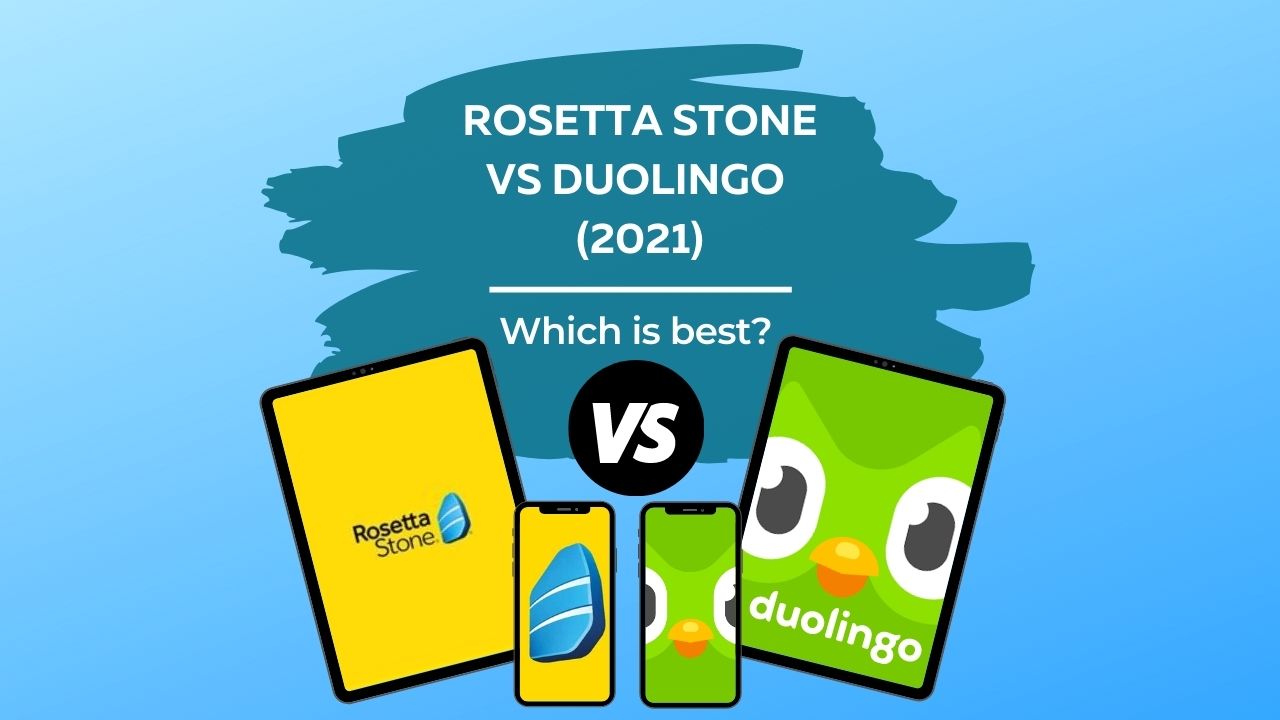
This article is a comparison between two popular language-learning apps: Rosetta Stone vs Duolingo. Both are online resources for learning a language that are easily accessible on desktop, as well as iPhone and Android devices.
In this review, I’ll take you into the members areas of both apps and show you their main features, then share my honest conclusion on which is better.
Overview Of Rosetta Stone vs Duolingo
Rosetta Stone
- Paid subscription (unlimited languages if you pay for 12 months+)
- 25 languages, including two English (UK and US) and two Spanish (Spain and Latin America).
- Target language is used exclusively
Duolingo
- Free to learn as many languages as you want, for as long as you want (with a paid option that removes ads and lets you download lessons)
- Motivating, addictive gameplay
- 37 languages
The Cost
Rosetta Stone: A 12-month course costs US 95.88 for unlimited languages.
Duolingo: Free. There is a premium subscription option called “Duolingo Plus” that costs $83.88 for one year.
Rosetta Stone vs Duolingo: The Verdict
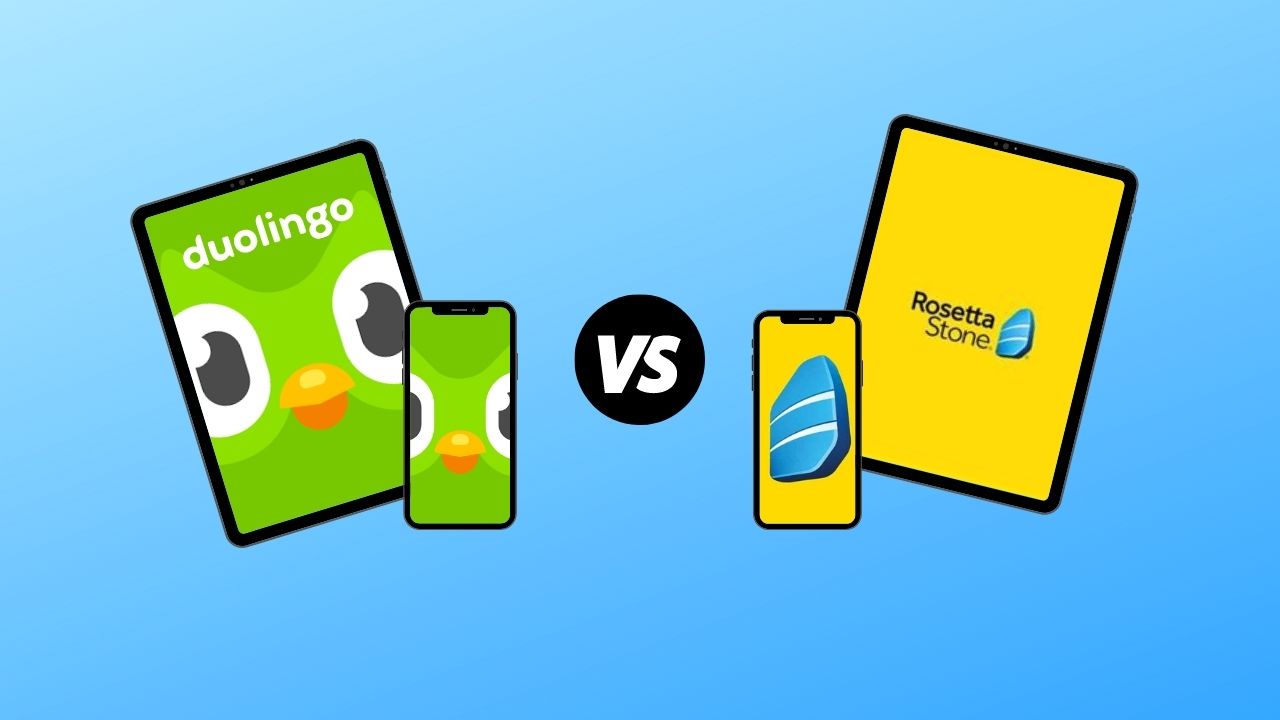
Duolingo has more followers than an Instagram star, and Rosetta Stone’s heart is still beating after two decades. So both must have something to them – right?
Well, I do think both can be effective tools for learning vocabulary, sentence structure and the basics of grammar. What I don’t think is that you’ll ever reach fluency by relying solely on one of these apps. Neither offers a fully immersive experience – you're just learning words and phrases.
That said, many people swear by these apps and I think if one of them matches your learning style, you could gain something from signing up as an absolute beginner.
In short:
Rosetta Stone is a good choice if you learn best with pictures and memory techniques. It gives you thorough pronunciation practice of individual words and sentences, with a focus on phonetics. If you’re not a lover of flashcard learning, these exercises won’t thrill you, but you’ll probably remember basic speech patterns well.
Duolingo is super fun and inspiring for beginners. If you stick with the game and practice daily, you could easily reach a lower-intermediate level. But I don’t believe you’ll go beyond that – it’s better for casual learners who want to get the gist of a language before committing to a more concrete course. Mind you, it’s ideal if you want to just get an idea and compare a few different languages before committing. Also, how many other apps offer Navajo, Yiddish and Esperanto?
(My top recommendation for language learners is my Uncovered courses, which teach you through StoryLearning®. Click here to find out about Uncovered.)
What Is Rosetta Stone?

Rosetta Stone has been one of the stalwarts in language learning since 1992. The old version came in big CD-ROM boxes, but the modern version is an app you can download.
It works well on a web browser and is compatible with Android and Apple devices – although I find lessons infuriatingly slow to process on my smartphone.
Rosetta Stone is interactive. The focus is on audiovisual learning, but using your target language only (i.e. no English).
Lessons consist of hearing spoken words and matching them to images you see on-screen. At the end of each lesson you receive a % score and you either pass or fail that lesson.
You can see a breakdown of how well you did per language skill: grammar, pronunciation, writing, vocabulary and listening. You can either redo a failed lesson to improve your score, or just move on.
Rosetta Stone takes the approach of teaching language the way babies learn: without the help of translation. I have some thoughts on that theory, but let’s first check out Duolingo…
What Is Duolingo?
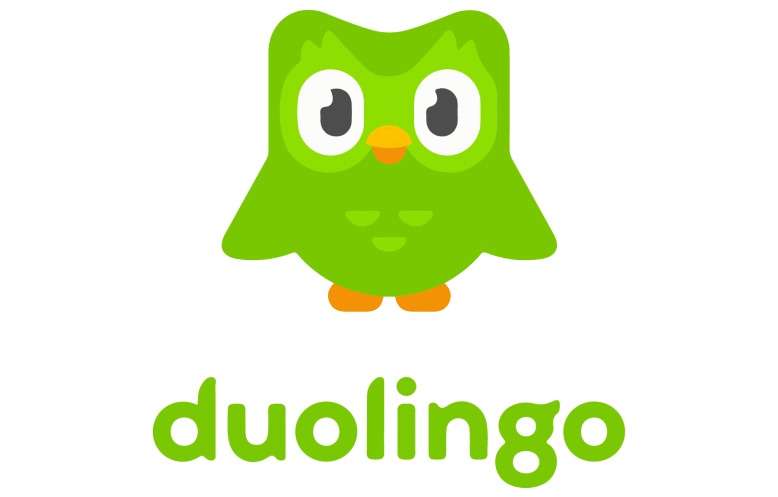
Duolingo is an app that’s hugely popular thanks to free language lessons that mimic the structure of a video game – good way to get followers!
In a lesson, you’re presented with small chunks of new information, then have to fill in answers. You hear or read a word or phrase, then either type something, match something or say something into a voice recorder in response. Animated characters pop up to make the lesson appealing and encourage you to answer or to ‘try again’.
While learning, you can level up, earn rewards (in-game currency used for character customization or bonus levels), get badges and set yourself challenges. You can also opt to join the race where learners advance past each other.
Duolingo has tried to include reading, writing, listening, and speaking skills – although there’s not a lot of depth to these, to be honest. You’ll no doubt pick up a lot of new vocabulary, but it’s all very visual and too translation-based to be immersive.
A Look At Rosetta Stone’s Lessons…
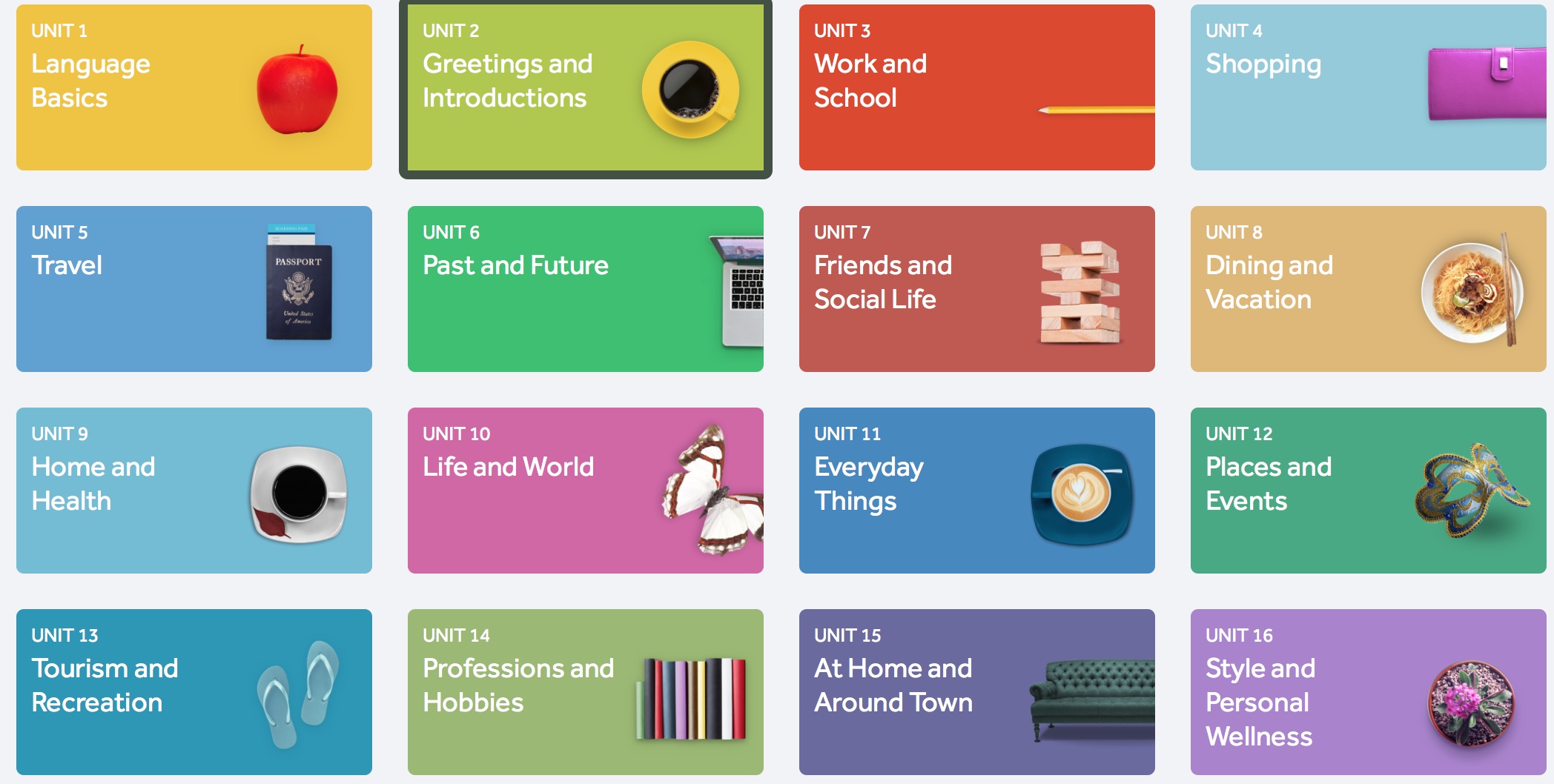
Rosetta Stone has 12 or 20 units, depending on the language, and each unit has 4 to 5 levels. Each unit emphasizes different vocabulary and language skills – including pronunciation, vocabulary, grammar, reading and writing. Just be aware that some languages only cover a few of these skills.
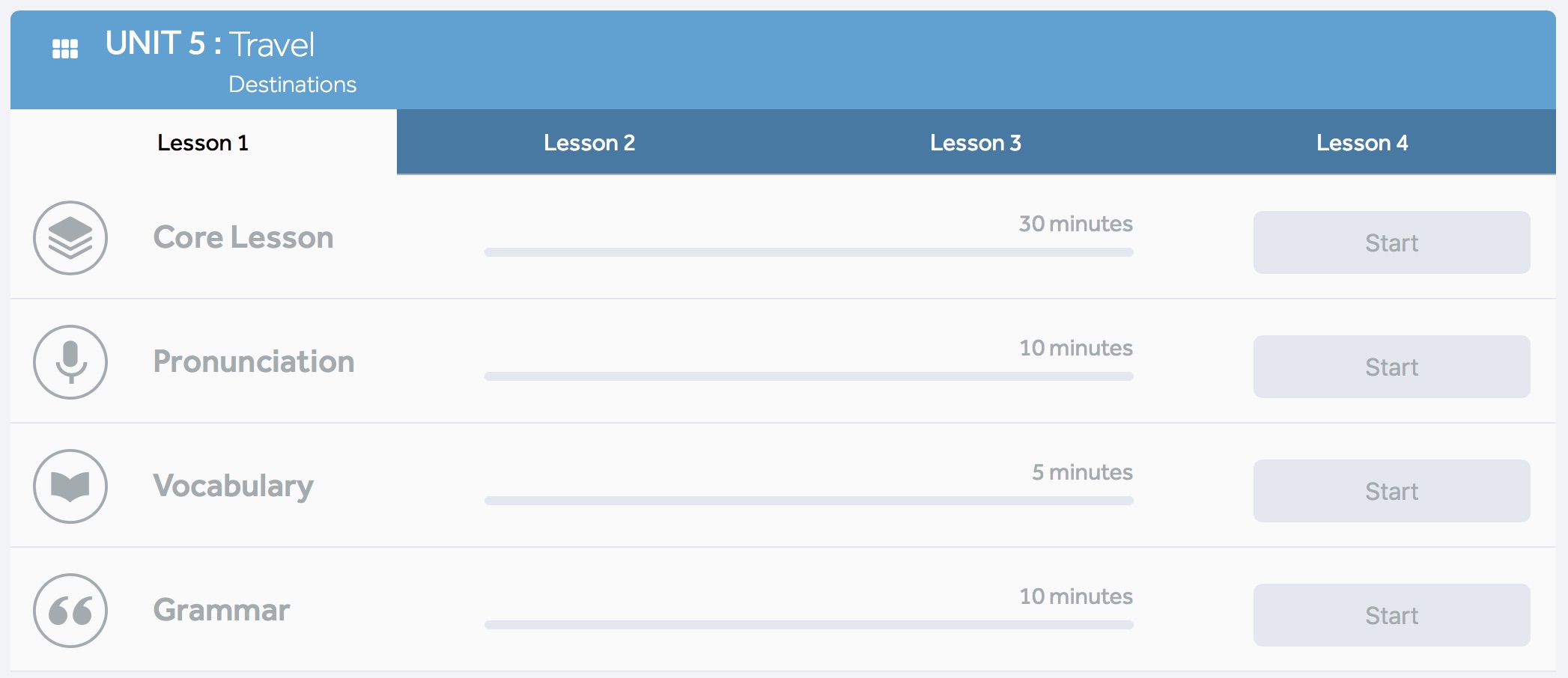
The lessons consist of matching words to pictures. For example, in a beginner lesson you see two images: a woman greeting a guest at the door, and a man dropping his kids at school. A man’s voice says the equivalent of ‘goodbye’ and ‘you have to click the correct picture. You then hear a woman say the equivalent of ‘hello’ and you’ll naturally click the other picture.
The same words are repeated over and over as you progress, in gradually increasing chunks of language and in different everyday scenarios. There’s a linear progression from introductory language in level 1 (one or two words) to building longer sentences at the higher levels.
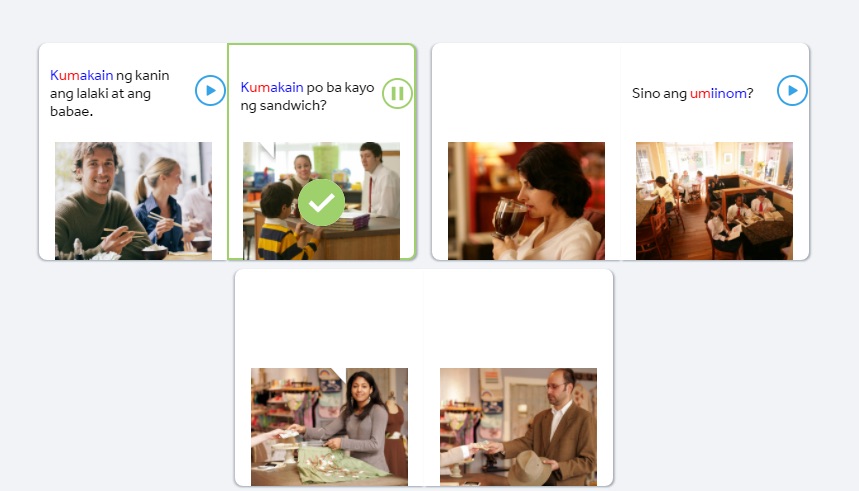
The lessons all work in this way. You’ll be prompted to:
- Match images with words you hear and see at the same time
- Match images with words you only hear
- Repeat words or phrases you hear
- Repeat word segments you hear (phonetics)
- Type words or phrases you hear
It’s logical stuff. I tried this out with a language unknown to me (Hebrew). After numerous lessons, I realised I was guessing answers based on the nouns and pronouns (he / she / the boy / the girl) which were easily matched to the photographs.
So, although the vocabulary for people stuck, other parts of speech didn’t. By higher levels the verbs started to stick due to repetition, but it was still lots of easy guesswork based on visuals. Bottom line: I never felt challenged to absorb the nuances of the language in a natural way.
You can also sign up for live streamed classes with a tutor. You’ll be with a few other students (up to 3) in a 25-minute class. You also have to first complete the relevant core lesson before signing up.
What I Like About Rosetta Stone
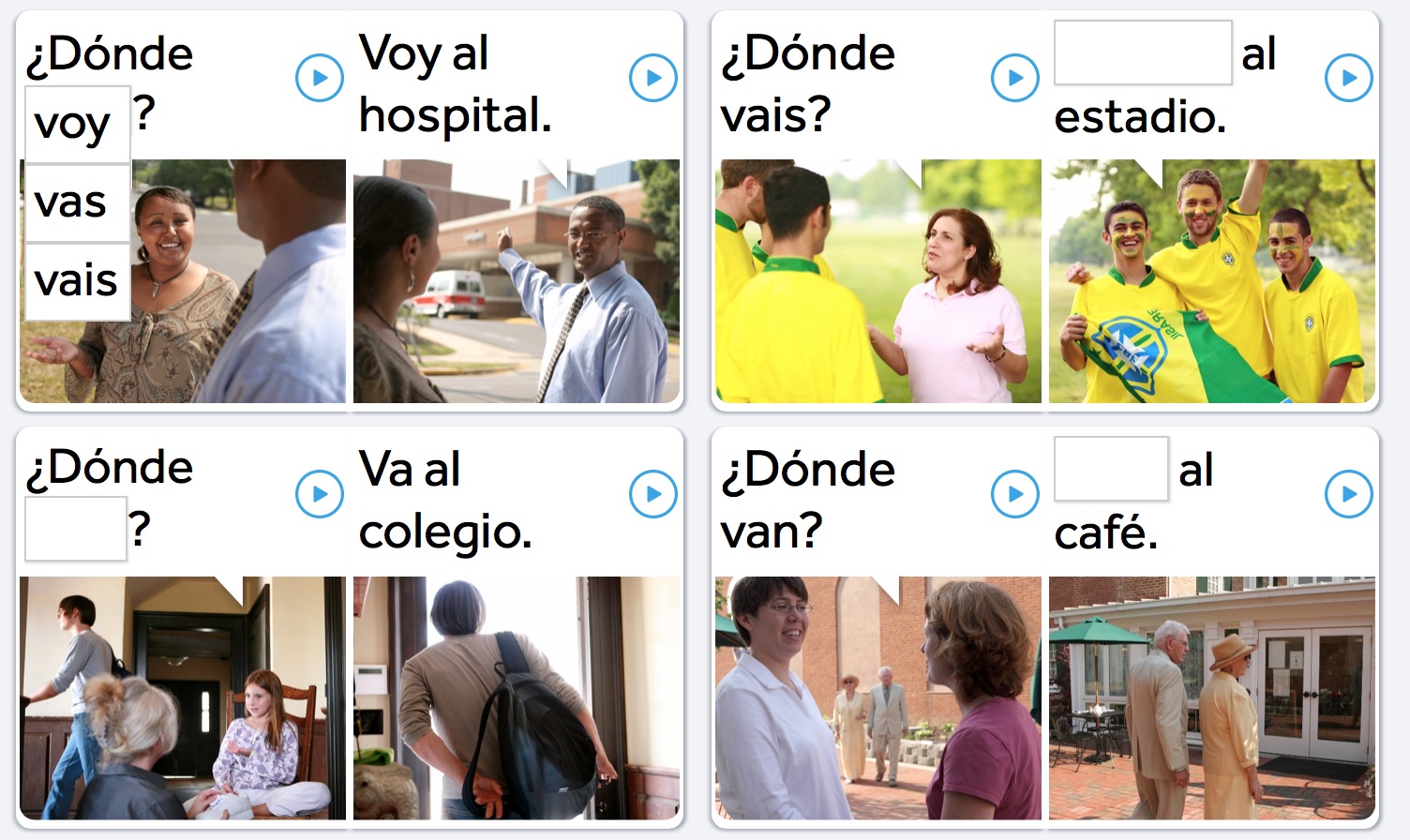
- Because of the high level of repetition, it’s a great method for building a really solid foundation of vocabulary and phrases. There’s a logical progression from simple words to a range of more complex sentence structures. You’re also presented with the same words in different contexts – helpful in gender-sensitive languages, or those with complex verb conjugations. The repetition, visual clues and forcing you to rely on your powers of deduction is a memorization method that works (if you have the patience.)
- I like that from the very first vocabulary lessons, you’re introduced to both singular and plural forms.
- The voice clips sound authentic and the audios very clear. This makes a huge difference to the overall quality – especially compared to some other apps!
- The speaking component is great – there are no shortcuts and you’re obliged to try and say the correct words from the start. I found this tool usually picks up your voice pretty well and pushes you to pronounce your words clearly.
- Grammar isn’t explicitly explained. I’ve said before that I have mixed feelings about this, with good reason. But the pictures very clearly give context and you’ll infer the correct meaning from them. As the course progresses, you keep seeing similar patterns; with these conceptual building blocks provided, you can figure it out naturally over time.
- Rosetta Stone’s layout is simple and the lessons are easy to navigate.
What I Don’t Like About Rosetta Stone

- This is not my idea of ‘immersion’ at all. Hearing phrases repeated over and over by a recorded voice is very different to hearing natural, authentic speech from a native speaker (especially one you can see.)
- The phonics lessons in the reading sessions seem a little childish for adult learners. I know they’re intended to help you get individual syllables right, but for English speakers, I don’t see any value in repeating sounds like ‘ta’ or ‘ba’. Repeating phonetic chunks of a word is only useful for sounds your mouth hasn’t made before – like certain Arabic letters, or perhaps the French ‘r’.
- There’s no cultural relevance, which is a bit disappointing for an expensive language course that’s been around since ‘92. Meaning they use exactly the same photographs for every course – only the language changes. Same faces, same backgrounds. From an immersion perspective, at the very least, it would be nice to see images that actually make sense for the culture you’re learning about!
- Not a great option for speaking and writing skills. You don’t really get to work out your own sentences or think about different ways to communicate. So although there’s no English used, there’s also no opportunity to be expressive in the language you’re learning.
- I found the lack of English support a bit limiting. The logic behind ‘learning like a baby’ is sound, but since we’re adults who already know how to communicate with words, this method can be adapted for maximum efficiency! With languages that use a non-Latin script, especially, one can’t rely on understanding being intuitive. You’d learn more quickly with simple explanations in English.
- Boring, slow exercises that lack ‘spark’.
- Pretty expensive for what you get. Having ‘unlimited languages’ for one price isn’t going to help you unless you buy the lifetime subscription. Can you see yourself learning 5 languages in one year? Neither can I.
A Look At Duolingo’s Lessons…
Duolingo doesn’t have the typical ‘beginner to advanced’ proficiency levels. Instead, you complete language skill units that are arranged in a ‘tree’.
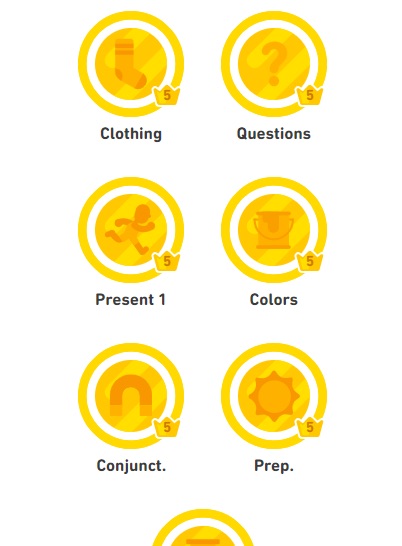
This ‘tree’ is on your homepage; it looks like a diagram and it represents your whole course. It’s quite a satisfying visual: you start at the top and work your way down, completing skills that get gradually harder.
Each skill unit has 5 levels of difficulty and once you’ve completed all 5, you can move to another skill. There’s a mix of vocabulary and grammar units in each section.
As you work your way down the tree, the types of exercises get more difficult. For example, you begin with lessons like ‘Basics 1’, ‘Animals’ and ‘Time’, and progress to lessons like ‘Travel’, ‘Infinitives’ and ‘Science’. There are also helpful grammar tips before each lesson.
If you're in the top 10 learners in your level each week, your name appears on a Leaderboard called ‘Leagues’. There are 10 leagues you can move up in as you progress (Bronze to Diamond). If you’re competitive, this can push you to study more to reach top place. Note: this doesn’t affect your learning – it’s just entertainment!
I like the feel-good aspect of this – you’re unlikely to get bored as a beginner. The animated characters keep you engaged.
The lessons are pretty easy in the early stages and you’ll probably whizz through them, since the exercises have obvious clues when you’re stuck. Typical exercises are ‘Tap what you hear’, ‘Speak this sentence’ and ‘Write this in (French)’. The recordings are clear and you can slow them down or press replay.
They get trickier as you progress, so you certainly will be challenged!
What I Like About Duolingo
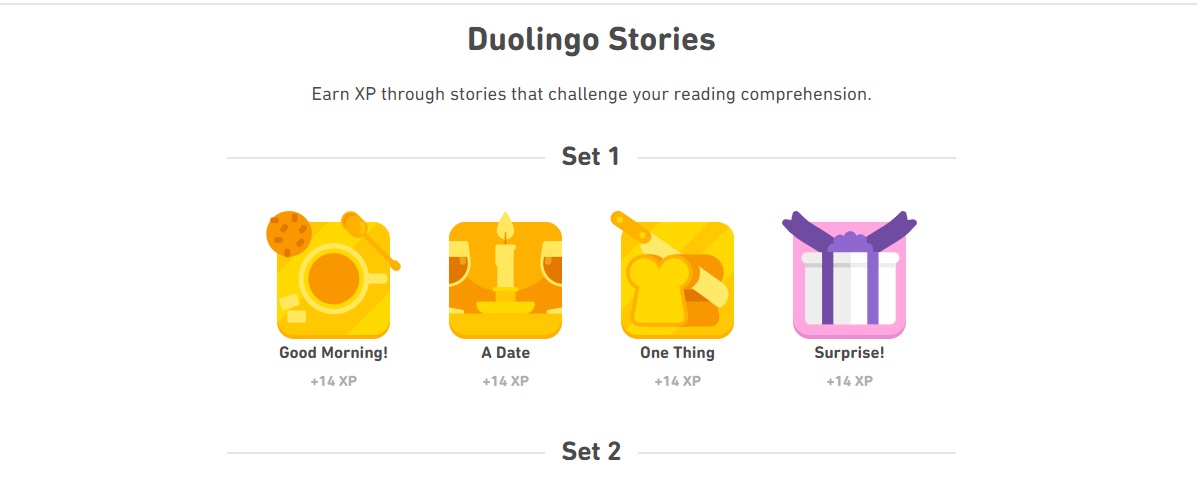
- It’s completely free to use and with so many languages to choose from, this opens up a whole world of language to explore! I love that Duolingo is so accessible to people in all situations. This is also awesome if you aren’t quite sure what to study and want to check out a few options before committing.
- You don’t need much motivation to do a lesson – they’re quick, friendly and engaging, so you kind of look forward to it.
- Duolingo is handy for beginners who want to learn some vocabulary, phrases and basic sentence structure.
- The app works very well across devices and lessons are synched, which is super convenient. This means if you’re on the go, you can just use your phone to pick up where you left off.
- The lesson reviews are optional, but you do get reminded and encouraged to do them. This is helpful and pushes you to remember things covered in older lessons.
- The Stories section is quite cool – it’s the one and only place you’ll get to hear a more continuous flow of language. These little paragraphs are there to test your reading comprehension – an important skill. I like that you can click on the audio lines to hear them again. You can also see English translations if you hover the cursor over words you can’t remember.
What I Don’t Like About Duolingo
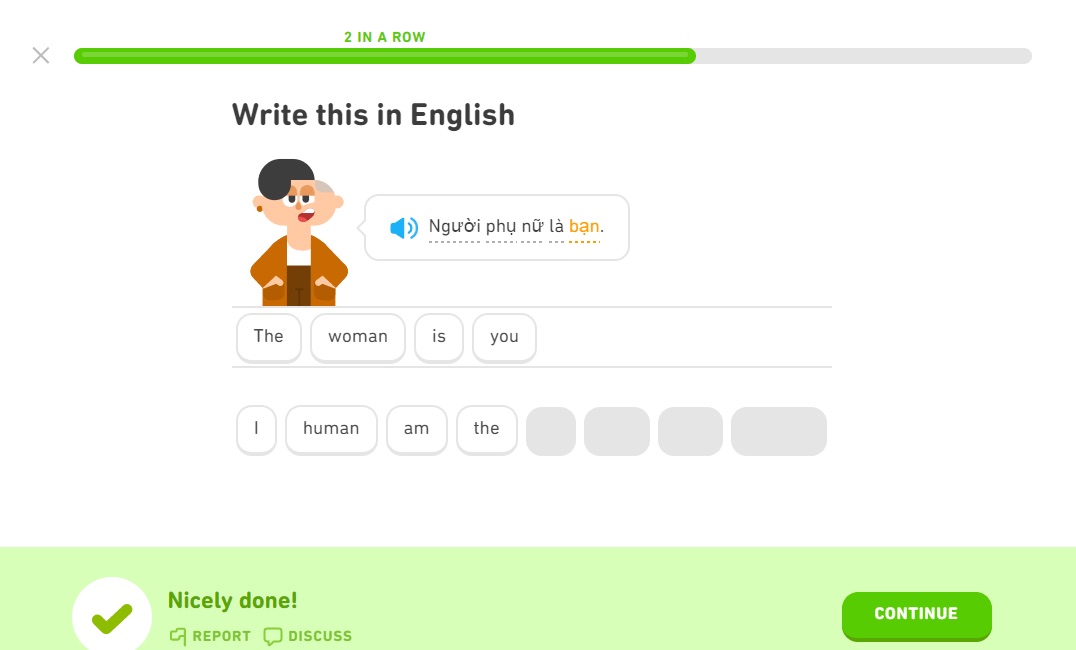
- While more popular courses (like French or Italian) teach useful phrases, other courses (like Navajo or Vietnamese) teach many impractical or odd sentences that you’d never use. They’re still developing some of these… but perhaps they shouldn’t be available until they’re complete!
- Some languages have unnatural-sounding audio recordings, which does nothing for teaching you what the language really sounds like.
- You can’t really advance beyond early intermediate, so it’s pretty ineffective in teaching learners to speak a language properly.
- It’s in no way immersive – there’s a complete lack of cultural context, uninterrupted listening or opportunities to practice conversations.
- The lessons don’t have proper structure and there’s too much freedom in choosing which ‘skill’ you want to do in each section. I don’t find this jumping around helpful for getting a good grip on the grammar.
- There’s often only one acceptable translation per sentence prompt, so even if you get the answer right, it can be marked wrong – without explanation. You can discuss these issues in the community, but nothing will change.
- The competitive Leagues you can advance through do more harm than good, in my opinion. They’re all about quantity, not quality – you rush to get more lessons done than everyone else – not exactly conducive to good learning!
Rosetta Stone vs Duolingo: Review Options
It’s so important to review what you’ve learned regularly, because you won’t know how you’re really doing until you have to recall things! Review helps you to see any gaps in your learning, and strengthen your brain’s capacity for really storing those nuggets of information over time.
Hey, when you learned your native language, you heard the same phrases all the time in everyday life, said over and over, in different contexts. That’s why they stuck!
So, how do Duolingo and Rosetta Stone measure up?
Rosetta Stone doesn’t have a separate review section. At the end of a lesson, if you didn’t score high enough there’s the option of repeating it to pass that lesson. You can see a breakdown of your scores for individual skills: pronunciation, vocabulary, grammar, reading and writing. This part is helpful for seeing where your strengths and weaknesses lie.
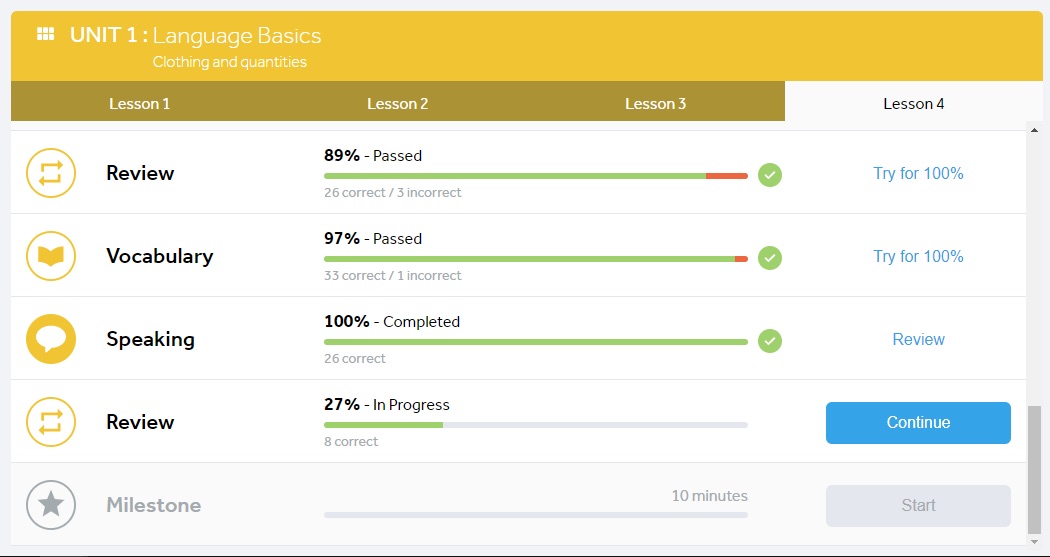
Duolingo uses a spaced-repetition system and this gets you to review what you’ve learned regularly, which is helpful. When the algorithm decides that you need to practice an old skill, the skill icon ‘cracks’ and you must review it to restore it. You don’t have to, but those cracks are pretty annoying to look at!
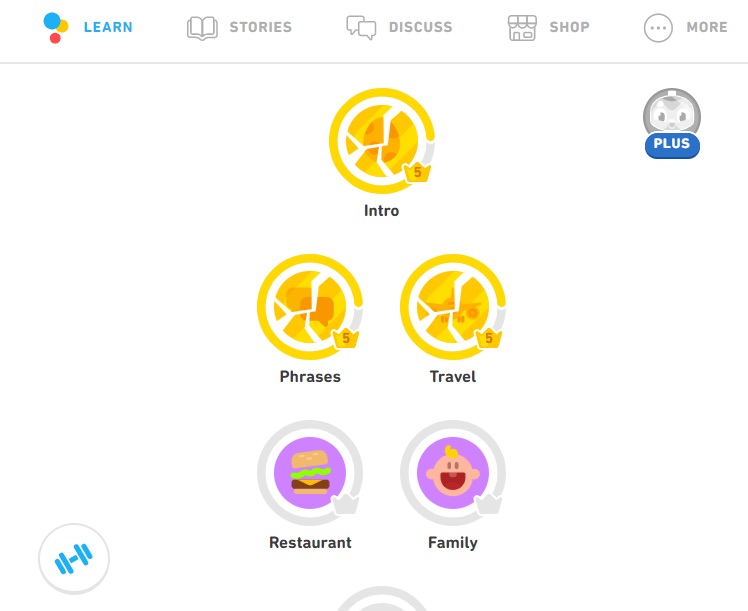
Rosetta Stone vs Duolingo: Extra Features
Rosetta Stone has a few extra features that add value:
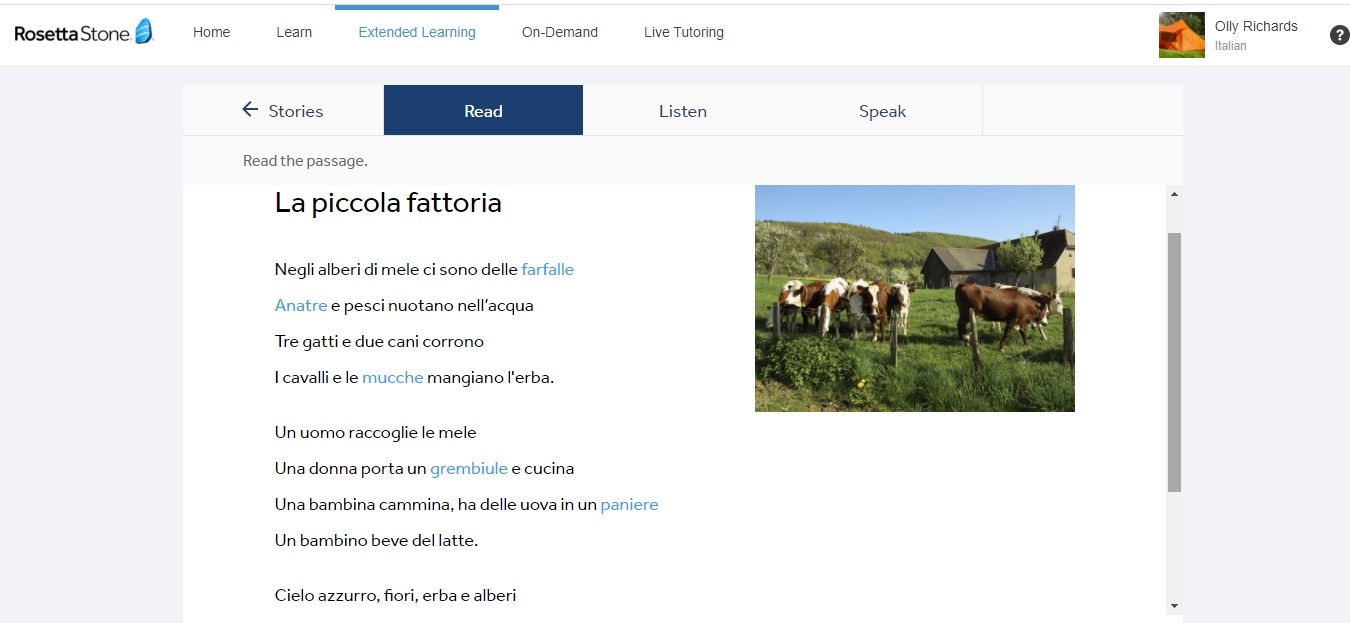
- ‘Stories’ is quite cool – definitely my favourite feature. A ‘story’ is basically an audio and text file about something interesting. So you read the text, then listen to a native speaker narrate it, and then record yourself saying it. When you’re listening, individual words are highlighted as they’re spoken. The stories get more difficult at higher levels and they’re really great comprehension and speaking practice. My one complaint is the voice recorder, which doesn’t always accept my accent.
- A phrasebook made up of useful sentences from the lessons. You can listen to a native speaker say them, and then practice them yourself with the voice recorder.
- ‘Audio Companion’ is a handy tool that you can use to download MP3 practice sessions – useful for when you’re offline or on the move.
- ‘On Demand’ is a video section where you can watch quick clips about culture, or get some conversation tips. For example, Italian has a one-minute video clip on all the ways you can use the word ‘allora’.
- ‘Seek & Speak’ is another fun extra. Users point their iPhone camera at an object and receive a translation in the language they’re learning. It’s only available in a few languages, though.
Duolingo also has some extra features that are quite cool:
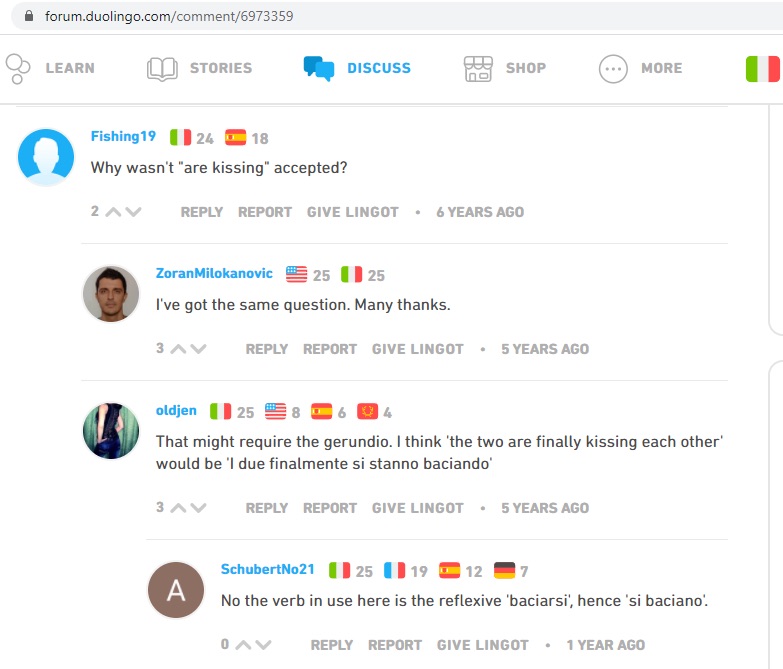
- A wordbank that shows all the words you’ve learned since you started. They work on a spaced-repetition system: Duolingo's algorithms figure out when you should practice words to get them into your long-term memory. At a glance, you can see your strong words down to your weak words, so you know what needs your attention.
- A searchable dictionary with all of the vocab from the lessons. Words you look up also come with a list of example sentences. Beneath this, you’ll see a few related discussions from the forum, which can sometimes be helpful.
- ‘Duolingo Stories’ are short, engaging interactive stories that give you extra reading and comprehension practice. They’re available on the Portuguese, Spanish, French and German courses.
Rosetta Stone vs Duolingo: The Cost
Rosetta Stone: There’s a 3-day free trial period, after which you can choose between a few subscription options. The Unlimited Languages deal doesn’t apply with the 3-month subscription, only 12 months or longer. They offer a 30-day money back guarantee, but only if you purchase the course directly from Rosetta Stone (i.e. not from a retailer).
The cost of a 12-month Rosetta Stone subscription is $95.88 USD.
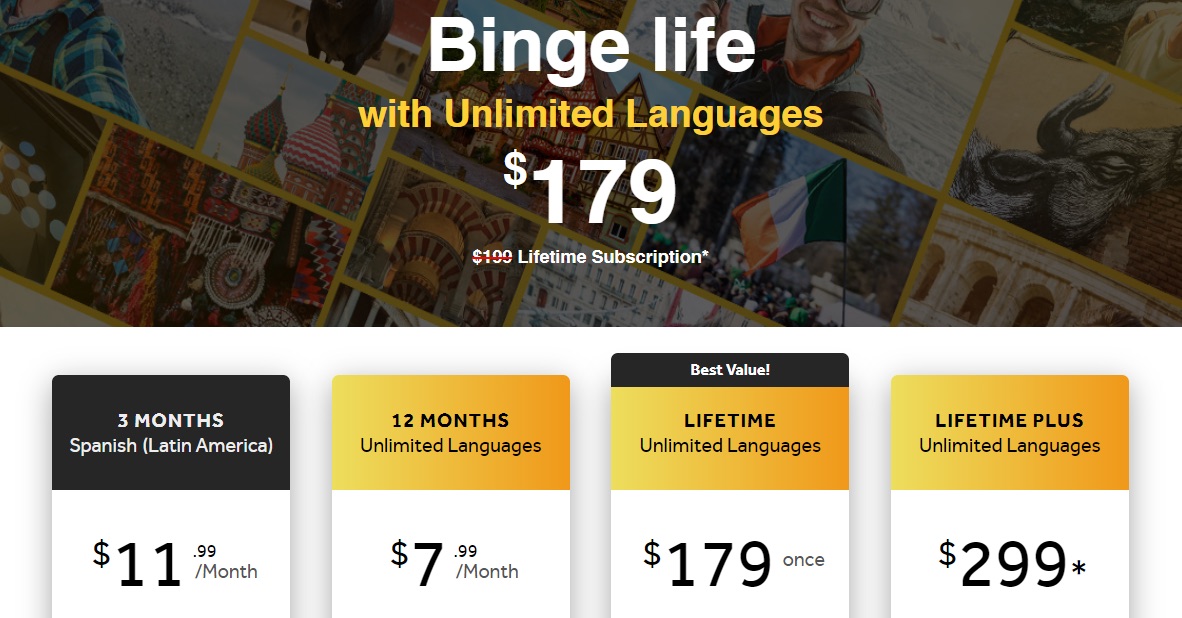
Duolingo: After a 14-day trial period, you can continue learning for free and have access to most of the features. You may learn as many languages as you want to, at the same time, for as long as you want to. The upgrade to Duolingo Plus isn’t necessary for learning, but it has a few benefits: no ads, downloadable lessons, unlimited game perks and progress quizzes.
The cost of a 12-month Duolingo Plus subscription is $83.88 USD.
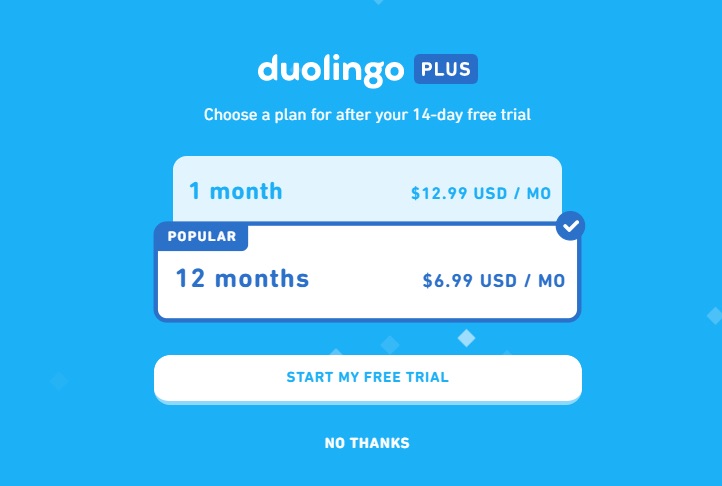
Final Verdict: Duolingo Or Rosetta Stone?
If I were to choose between the two, I’d go with Duolingo. Here’s why…
I don’t believe one can learn a language to fluency with either of these apps – there’s just too much missing and zero chance for natural immersion. However, both can be really beneficial for building a strong vocabulary base.
So I’d go with the fun one, and that’s hands-down Duolingo.
I mean, if I’m going to spend an hour a day doing activities that supplement my real learning, it’s going to have to be something I look forward to!
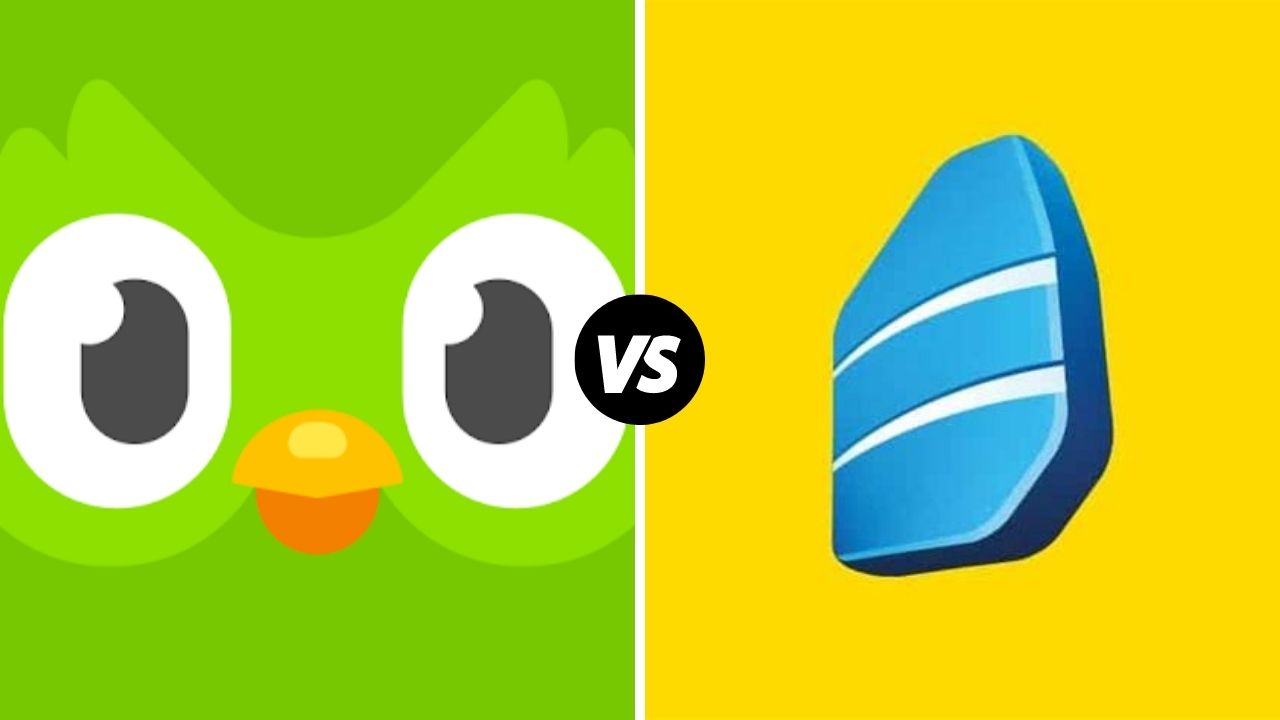
Rosetta Stone’s value is in memorization techniques, so it will certainly help you lock in plenty of words and phrases. You may be someone who does well with this technique, in which case… go for it! I found the overall experience tiresome, though.
Duolingo can keep you sharp in between lessons. If you take a more concrete language course in the evenings, for example, Duolingo can give you a fun boost during the day. You could play the ‘colour words’ unit in your coffee break, or tackle a 5-minute story while waiting for your lift.
If you’re keen to try Rosetta Stone for yourself, I highly recommend using the free trial before committing. Be sure to look at the specific language you want to learn, so that you know exactly how many fluency levels will be available to you. Duolingo is always going to be there as a free option when you want some fruitful entertainment.
However, if you're looking for a comprehensive beginner programme that will take you all the way to an intermediate language level and that uses a much more fun, engaging and effective method, then I've got something that might suit you better…
StoryLearning: A Better Alternative To Rosetta Stone Or Duolingo

While these apps can be useful and motivating for beginners, neither has what it takes to give you a truly immersive and exciting experience while you learn a language.
That's where Uncovered is different.
Uncovered is a comprehensive online beginner course that takes you from a complete beginner in a language, up to an intermediate level. And it's fuelled by a fun and unique method called StoryLearning®.
StoryLearning is a process that was invented to teach you languages naturally. It’s so natural, in fact, that it’s based on how human beings learn their native language.
In the course, you'll learn through an exciting original story in your language of choice, written especially for beginner learners. Every word is intentional and designed for optimal learning to take place.
Though you learn through story, you also have a teacher and experienced language learner by your side all the way through the course. She offers support with explanations in English and tips to help you learn the material fast.
Uncovered teaches all of the key aspects of the language: reading, listening, vocabulary, grammar, pronunciation and speaking. So by the time you've finished, you'll be a confident intermediate level language speaker, ready to go out and actually use your new language in the real world!
What You Get With Uncovered

- Complete 20-module course to learn to speak your new language with confidence through StoryLearning™. This is a method that relies on your brain's natural way of learning.
- 60 – 80+ video lessons with your experienced language teacher. You'll learn with the same method that's attracted worldwide attention, from the BBC, Independent, Open University, European Commission, El País, and more!
- Learn the secrets I used to learn 8 languages and how to use them yourself to learn to speak with confidence & take part fully in conversations with native speakers.
- Fully downloadable programme so you can learn faster – anywhere, any time, and on any device… even without an internet connection!
- Complete learning material, including audiobook, translations, printable worksheets… everything you need to get started and find success with your language learning!
- Expert pronunciation training videos, so you can perfect your pronunciation and speak like a native from the start.
- Money-back guarantee, so you can buy without risk today, and get a full refund if you don't love it.
If you're determined to learn a language and looking for the most fun and effective language course around, I'm confident you'll love Uncovered! Ready to start? Click here to find out more about Uncovered and start your language learning journey.

Olly Richards
Creator of the StoryLearning® Method
Olly Richards is a renowned polyglot and language learning expert with over 15 years of experience teaching millions through his innovative StoryLearning® method. He is the creator of StoryLearning, one of the world's largest language learning blogs with 500,000+ monthly readers.
Olly has authored 30+ language learning books and courses, including the bestselling "Short Stories" series published by Teach Yourself.
When not developing new teaching methods, Richards practices what he preaches—he speaks 8 languages fluently and continues learning new ones through his own methodology.








































